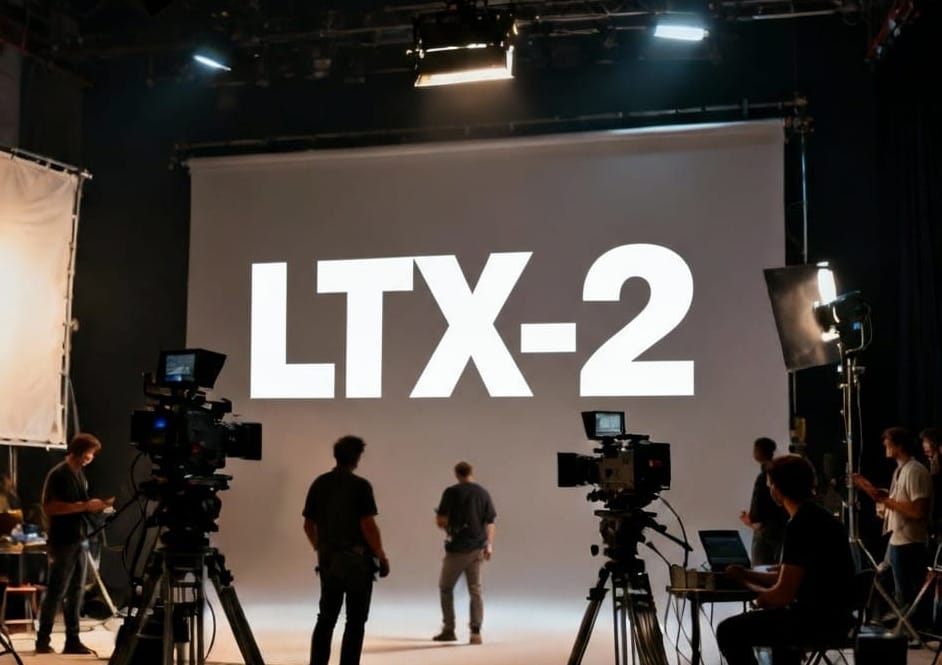How to Write Cinematic Prompts for Image to Video and Text to Video on RunDiffusion
LTX-2 on RunDiffusion interprets prompts like a cinematographer would direct a scene. Whether you start with an image or just a concept, your words guide how the camera moves, how the light behaves, and how characters or environments react. This guide teaches you how to write strong prompts for both Image to Video and Text to Video using LTX-2. LTX-2 is now available on RunDiffusion.
Single Continuous Paragraph
Rule: Describe the scene in one flowing paragraph without line breaks, lists, or fragmented thoughts.
Example Prompt
A lone fisherman rows across a foggy lake before sunrise, the boat creaking softly as water laps at its sides. The camera glides overhead, tracking his slow progress. His lantern casts a warm circle of light, reflecting in ripples while reeds sway gently on the shoreline. A distant bird call echoes as mist rolls across the surface, partially obscuring the horizon.
2. Present-Tense Action Verbs
Rule: Describe all action in present tense. Use walks, tilts, flickers not walked or tilted.
Example Prompt
A young boy runs barefoot across a wet stone courtyard as the first raindrops begin to fall. The camera tracks behind him at low angle, catching the splashes beneath his feet. He turns sharply, arms outstretched for balance, and laughs as thunder rumbles overhead. His clothes cling slightly from the damp, and puddles reflect the flickering lanterns lining the perimeter.
3. Explicit Camera Behavior
Rule: Clearly describe the camera’s perspective, angle, movement, and speed.
Example Prompt
A florist arranges bouquets at an outdoor stall along a cobbled street while morning light spills between nearby buildings. She lifts a bundle of tulips and rotates it slightly as the stems are trimmed with quick, practiced motions. The camera begins in a wide shot from across the street, then slowly pushes forward at shoulder height as pedestrians blur in the foreground. Her hands shift the bouquet to a metal bucket, droplets falling to the pavement below as she steps to one side. A passing bicycle crosses the frame just before the shot settles into a close-up of her arranging sunflowers by hand.
4. Precise Physical Details
Rule: Use small, measurable movements, gestures, and posture changes. Describe what the camera sees.
Example Prompt
A woman stands at a kitchen counter slicing vegetables. Her right hand grips the knife while her left hand presses gently against the cutting board. Her eyebrows lift approximately two millimeters as she hears a creak behind her, and the blade pauses mid-air. The camera holds in a medium close-up with shallow depth of field, capturing the tension in her wrist and the stillness of the hanging lights above.
5. Atmospheric Environment
Rule: Describe lighting, air, textures, sound, and ambient elements that enhance the tone.
Example Prompt
A young woman stands at the edge of a rocky cliff overlooking the ocean. She raises her hands while seagulls fly overhead. Pale blue light from an overcast sky diffuses across the scene, softening the edges of distant waves and casting no sharp shadows. The camera begins in a medium shot behind her, then slowly pulls back to reveal tall grasses swaying at the cliff’s edge. A cool breeze ripples through her hair while.
6. Smooth Temporal Flow
Rule: Use connectors like “as,” “then,” or “while” to ensure each action flows naturally into the next.
Example Prompt
A pair of elevator doors slide open inside a metallic corridor on a spaceship as thin mist rolls out from the floor vents. As the camera begins in a stationary wide shot, a tall alien figure wearing a white uniform steps forward through the haze, its silver-blue skin reflecting soft red light from the control panels overhead. Then the camera glides sideways, following the alien’s stride as it moves across the deck toward a glowing console. Its fingers rise slightly while the lights flicker in sequence, illuminating rows of suspended pipes above. The alien pauses to examine the console’s surface just before the elevator doors close behind it, sealing the room in a rhythmic hum of engines and distant vibration.
7. Genre-Specific Language
Rule: Match the tone and vocabulary to your intended genre (sci-fi, horror, romance, fantasy, etc.)
Example Prompt (Sci-Fi)
A maintenance drone glides through a long tunnel inside a deep space cargo vessel, its circular frame rotating gently as it shines beams of light on the the walls. The camera floats alongside in a slow tracking shot, matching its speed. A soft mechanical hum blends with distant low thrum of the ship’s reactor core. Red text scrolls across its display screen while ceiling lights dim in sequence, casting the corridor in alternating shadows as the drone continues forward through the narrowing passage.
8. Character Specificity
Rule: Use age, ethnicity, clothing, posture, or distinguishing physical details—only if they’re observable.
Example Prompt
A middle-aged South Asian man wearing a long tan coat and dark scarf steps into a narrow alley lit by neon signage. The camera tilts up from his shoes as rain hits the cobblestones, revealing his profile in close-up as he pauses beneath a flickering sign. Steam rises from a nearby vent while green and purple reflections dance across his glasses. He glances upward, the ambient glow catching a crease in his brow.
9. Show, Don’t Tell Emotion
Rule: Do not describe how someone feels only what they do or how their body reacts.
Example Prompt
A teenage boy stands alone near the edge of a school rooftop at golden hour, his arms resting on the metal safety rail. The camera begins in a medium side angle, catching the breeze lifting the hood of his sweatshirt slightly as warm light flares across the lens. He blinks slowly, then wipes beneath one eye with the back of his hand. A single tear trails down his cheek and falls from his jaw. As he exhales, his shoulders drop by an inch, and he tilts his head back to watch a flock of birds pass overhead in silence.
Bonus Tip: Match Prompt to Input Type
Rule: If using Image to Video, describe the image exactly and build on it.
If using Text to Video, define everything from scratch like the examples above.
Are you ready?
After all that reading you must be ready to test out LTX-2 you can click the link below to Try LTX-2 on RunDiffusion.






